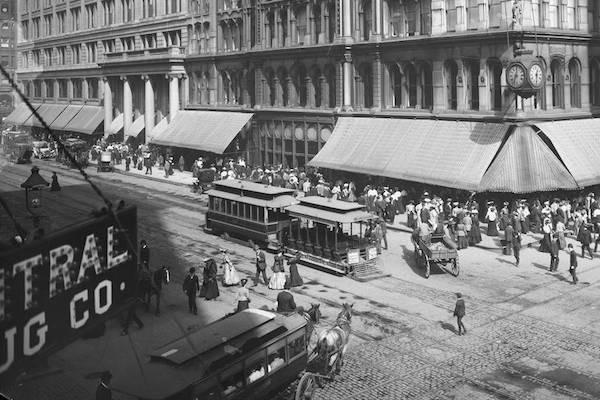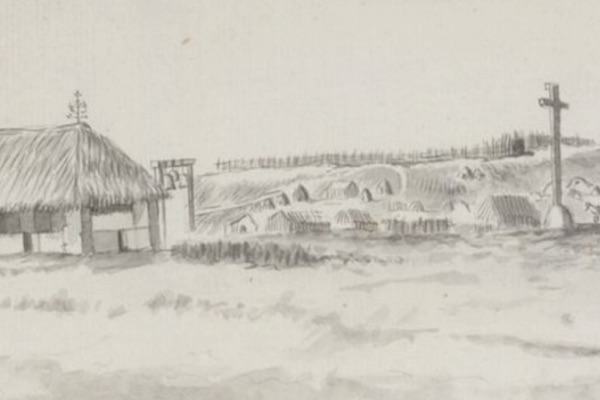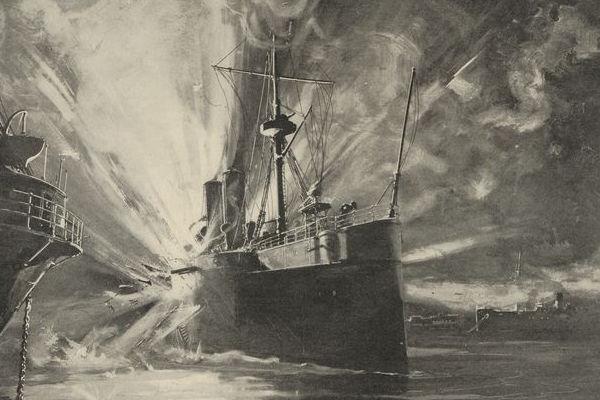Beginning with sixteenth-century European explorers, travelers and traders in the Americas dreamed of direct route to connect the Atlantic and Pacific Oceans. That dream would become a reality with the construction of the Panama Canal, a forty-eight mile ship canal across the Isthmus of Panama. The new passage allowed ships to cross in six to eight hours and avoid the long, treacherous Cape Horn route around the southernmost tip of South America. Although the canal project was started by France in 1881, the United States purchased French equipment and excavations in Panama in 1904 and began construction. A decade later, after political struggles, changes in leadership, 375 million dollars in spending, and the death of an estimated 5,600 workers, the project was complete. This primary source set includes photographs, documents, maps, and footage that can be used to explore the stories of environmental issues, political struggle, and human labor that built the Panama Canal.
 The text from a 1901 speech given by Phillipe Bunau-Varilla assessing the value of Nicaragua and Panama Canal options.
The text from a 1901 speech given by Phillipe Bunau-Varilla assessing the value of Nicaragua and Panama Canal options. An illustration of men packing 6.5 million dollars in gold for the first United States’ Panama Canal purchase payment to France, 1904.
An illustration of men packing 6.5 million dollars in gold for the first United States’ Panama Canal purchase payment to France, 1904. A map of Panama indicating the path of the Panama Canal, 1904.
A map of Panama indicating the path of the Panama Canal, 1904. A 1905 political cartoon about Congressional debate over funds to build the Panama Canal.
A 1905 political cartoon about Congressional debate over funds to build the Panama Canal. A photograph of laborers depart from Barbados for the Panama Canal, 1909.
A photograph of laborers depart from Barbados for the Panama Canal, 1909. A photograph of construction on the sides of the Panama Canal with houses in the background.
A photograph of construction on the sides of the Panama Canal with houses in the background. A chart showing the percentage of Panama Canal laborers with malaria over time, 1916.
A chart showing the percentage of Panama Canal laborers with malaria over time, 1916. A photograph of man using a knapsack sprayer to apply larvacide to a ditch in Panama, 1910.
A photograph of man using a knapsack sprayer to apply larvacide to a ditch in Panama, 1910. A photograph of Department of Agriculture surveyors documenting Gatun Lake prior to the completion of the Panama Canal, 1910-11.
A photograph of Department of Agriculture surveyors documenting Gatun Lake prior to the completion of the Panama Canal, 1910-11. A photograph of Jamaicans operating a compressed air drill as part of construction for the Panama Canal, 1913.
A photograph of Jamaicans operating a compressed air drill as part of construction for the Panama Canal, 1913. A photograph of a construction tower in the Panama Canal Bed.
A photograph of a construction tower in the Panama Canal Bed. A photograph of segregated living quarters for black Panama Canal laborers and their families.
A photograph of segregated living quarters for black Panama Canal laborers and their families. A stereoscopic card from Keystone Viewing Company of the Gatun locks at work, Panama Canal, 1910s.
A stereoscopic card from Keystone Viewing Company of the Gatun locks at work, Panama Canal, 1910s. A 1914 political cartoon depicting the completion of the Panama Canal.
A 1914 political cartoon depicting the completion of the Panama Canal.- A film reel of the Panama Canal in 1921 taken by the U.S. Department of the Navy.































